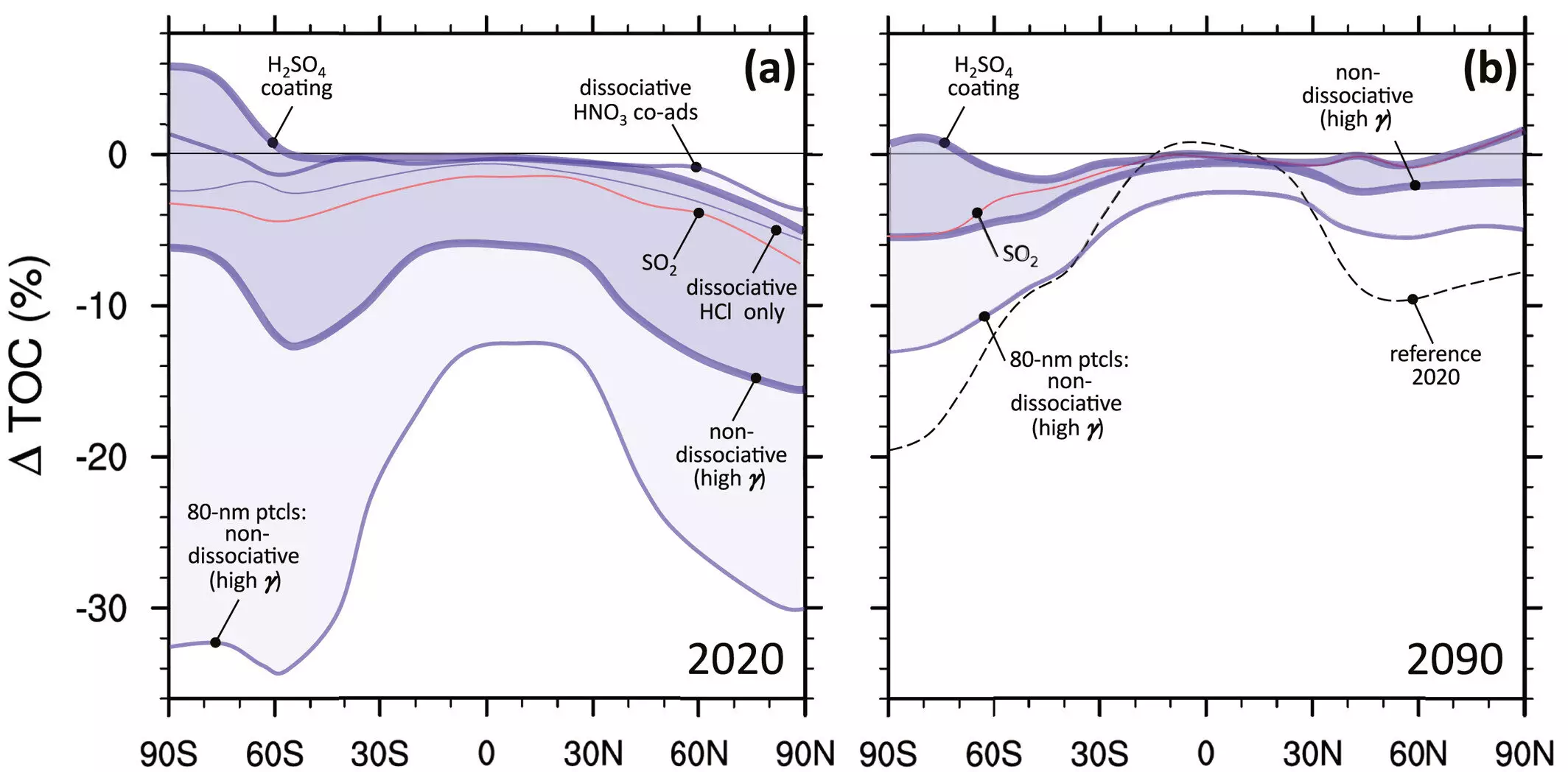As concerns over rising greenhouse gas levels and global warming continue to grow, scientists are exploring various methods to temporarily mitigate the effects of climate change. One proposed solution involves the injection of aerosols into the stratosphere to reflect incoming sunlight and reduce global temperatures. While previous studies have primarily focused on using gaseous sulfur dioxide for this purpose, recent research suggests that solid materials, such as alumina, calcite, or diamond particles, could offer more effective cooling with fewer side effects. However, there remains limited understanding of the impact of solid material injection on the stratospheric ozone layer.
The current understanding of the ozone layer’s response to solid material injection is largely based on decades-old experimental data involving alumina particles emitted into the stratosphere via solid-fuel space rocket exhaust. This limited dataset hinders our ability to accurately assess the potential risks and benefits of utilizing solid materials for climate intervention. Therefore, it is crucial to conduct further research to fill this knowledge gap.
In a recent publication in Geophysical Research Letters, Sando Vattioni and colleagues present their findings on the comparison between stratospheric conditions resulting from space shuttle exhaust plumes and alumina injection scenarios. Their research indicates that while alumina injection may offer advantages over sulfur dioxide in terms of reduced local stratospheric heating, there are significant uncertainties surrounding the impact on the ozone layer.
The study tested scenarios involving the injection of approximately 5 megatons of alumina particles into the stratosphere annually, which would compensate for a quarter of the current radiative forcing caused by anthropogenic greenhouse gas emissions. The researchers estimate that the global mean ozone loss resulting from these scenarios could range from negligible to as much as 9%, which is double the historical peak of ozone loss caused by chlorofluorocarbons in the 1990s.
Given the complexities and uncertainties surrounding the potential impacts of alumina injection, the authors emphasize the necessity for additional research. Specifically, they highlight the importance of studying surface reactions of solid particles in the atmosphere, particularly in relation to temperature, trace gas concentrations, and relative humidity under present and future stratospheric conditions. By improving our understanding of these factors, we can minimize uncertainty and enhance our ability to predict the behavior of solid particles when injected into the stratosphere for climate intervention.
While the concept of aerosol injection in the stratosphere holds promise as a potential method to combat global warming, it is crucial to critically analyze the existing literature and identify its limitations. The study discussed in this article highlights the need for more comprehensive research to fully understand the impacts of solid material injection, such as alumina particles, on the ozone layer. By addressing these knowledge gaps, scientists can make more informed decisions regarding climate intervention strategies and mitigate any unintended consequences that may arise from these approaches.


Leave a Reply